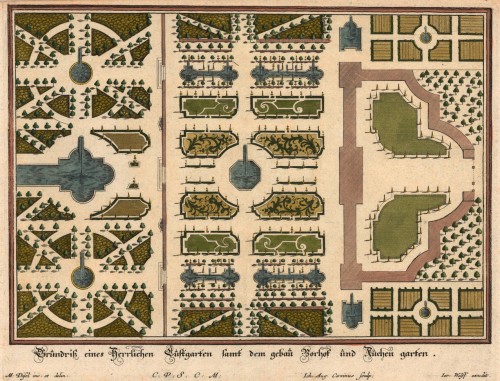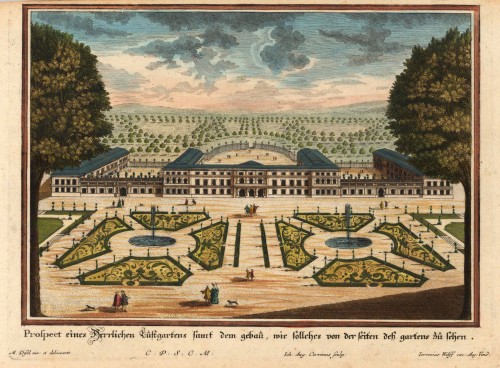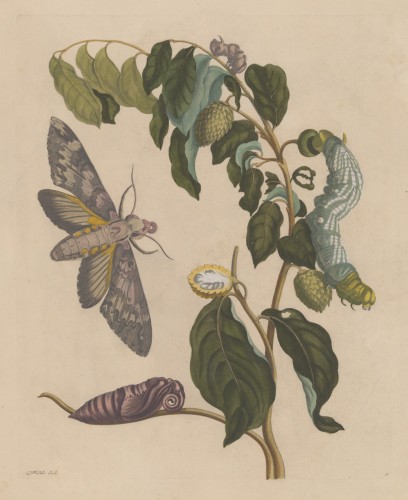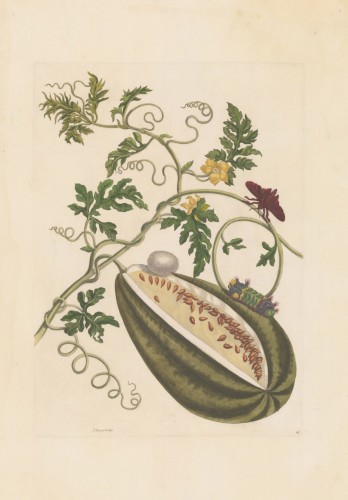Merian, Matthaeus & de Bry, Johannes
Tulipa praecox lutea - Tulipa praecox rubra - Tulipa praecox purpurea - Tulipa summo miniata calice luteo - Tulipa...
Handcolored copper-engraving by M. Merian after de Bry and Valentini, published by Michael B. Valentini in "Viridarium reformatum".
Eigenschaften
- Published: Frankfurt
- Published date: 1719
- Technique: Copper engraving / later hand color
- Type: Print
- Issue date: 1719, 1719.
- Category: Tulips
- Size: 29 x 18 cm (11.5 x 7 inches).
- Stock number: 31199
- Condition: In excellent condition.
Article description
Article description
Original antique copper engraving, later hand colored. Handcolored copper engraving by M. Merian / de Bry, published 1719 in Michael B. Valentini's 'Viridarium reformatum'. Michael Bernhard Valentini (born November 26, 1657 in Gießen; † March 18, 1729 ibid) was a German doctor and naturalist. Use of moxa to heal Podagra and Chiagra. Engraving designed on the basis of a font by Hermann Buschoff in Valentinis Museum Museorum, Vol. I (2nd edition 1714) Valentini was born as the son of Johann Justus Velten (1625–1689) and his wife Marie, née Will, in Gießen, a university town of about 5000 inhabitants that belonged to the Grand Duchy of Hesse-Darmstadt. His father, who came from nearby Grossen-Linden, had his name Latinized. Michael Bernhard, born as the eldest of two sons, attended the Gießen Pedagogy from 1669 to 1675, then the university, where he took the usual training path and initially studied history, logic, metaphysics and mathematics at the philosophical faculty. In 1676 he defended a logical-metaphysical disputation under the theologian Kilian Rudrauff (1627–1690). Also worth mentioning is the visit to the Compendium Physicum, a lecture in natural philosophy given by Lorenz Strauss at the philosophical faculty. After studying medicine with the aforementioned Strauss, with Michael Heiland and the then associate professor Ludwig Christian Tackius (1655-1718), Valentini was licentiate in medicine in 1680 with the work De convulsionibus. As a result, he initially worked as a general practitioner in the County of Leiningen-Hardenburg, before practicing as a second garrison medic under Johann Daniel Widt in Philippsburg. From 1682, back in Giessen, he ran a large practice and wrote the Epistolica de nova matricis et morbonae muliebris anatome addressed to Widt, which made him a member of the Academia Naturae Curiosorum in 1683. A scientific journey that took him to France, Holland and England broadened his horizons. In 1686 he obtained his doctorate in Giessen, and one year later he took over the chair of physics. Thanks to his contacts to the Musschenbroeks workshop in Leiden, he was able to buy physical instruments, in particular an Antlia pneumatica (= air pump) and establish experimental physics at the University of Gießen, which is now the third German university to include the "new physics" in its curriculum after Altdorf and Marburg offered. In 1697 Valentini moved to a chair in medicine. In 1720 he was given the "Seniorat" and "Economics Inspectorate" of the university. In 1728 he was appointed imperial body medicine. From 1683 he belonged to the German Academy of Natural Scientists Leopoldina, founded in 1652, and made important contributions to its development. In 1704 he became a member of the Berlin Academy of Sciences and on November 10, 1715 a member of the Royal Society in London. Valentini was in contact with numerous scholars in Europe and the Far East. Not only did he accumulate a wealth of information, but he also built an extensive collection. His work "Museum Museorum", published at the beginning of the 18th century, is still a treasure trove for information on Materia Medica from all over the world, as well as on the importance and method of collecting and on the most important collections of his time. The third part presents numerous apparatuses and instruments from Musschenbroek. In addition to almost a hundred articles for the Miscellanea curiosa medico-physica published by the Academia Naturae Curiosorum and numerous small papers, disputations and university speeches, Valentini published several important medical textbooks, such as his Medicina nov-antiqua, which was first greatly expanded in 1698 and second in 1713 and a 750-page edition was published in Frankfurt am Main. With well over a thousand pages, the first edition of the practice medicinae infallibilis, published in 1711 and the second edition in 1721, is even more extensive. His Amphitheatrum zootomicum, first edition published in 1720 (2nd edition 1742), is also worth mentioning. The book shows images of domestic and exotic animals on 105 panels: The impressive collection, however, does not reveal any explicit classification criteria, but seems to serve to safeguard and preserve traditional knowledge. (Wikipedia)Handcolored copper-engraving by M. Merian after de Bry and Valentini, published by Michael B. Valentini in "Viridarium reformatum".
Recently viewed products






